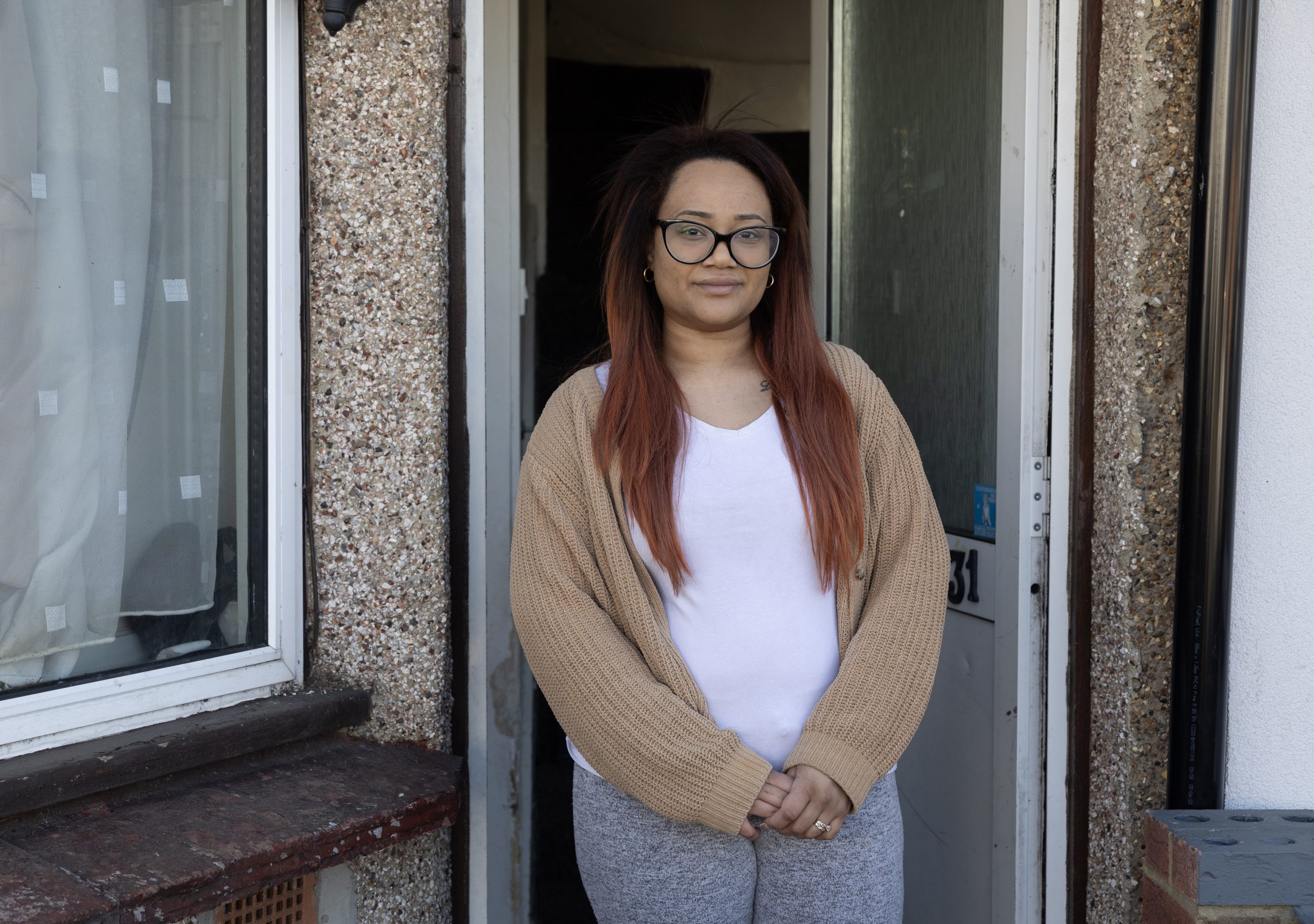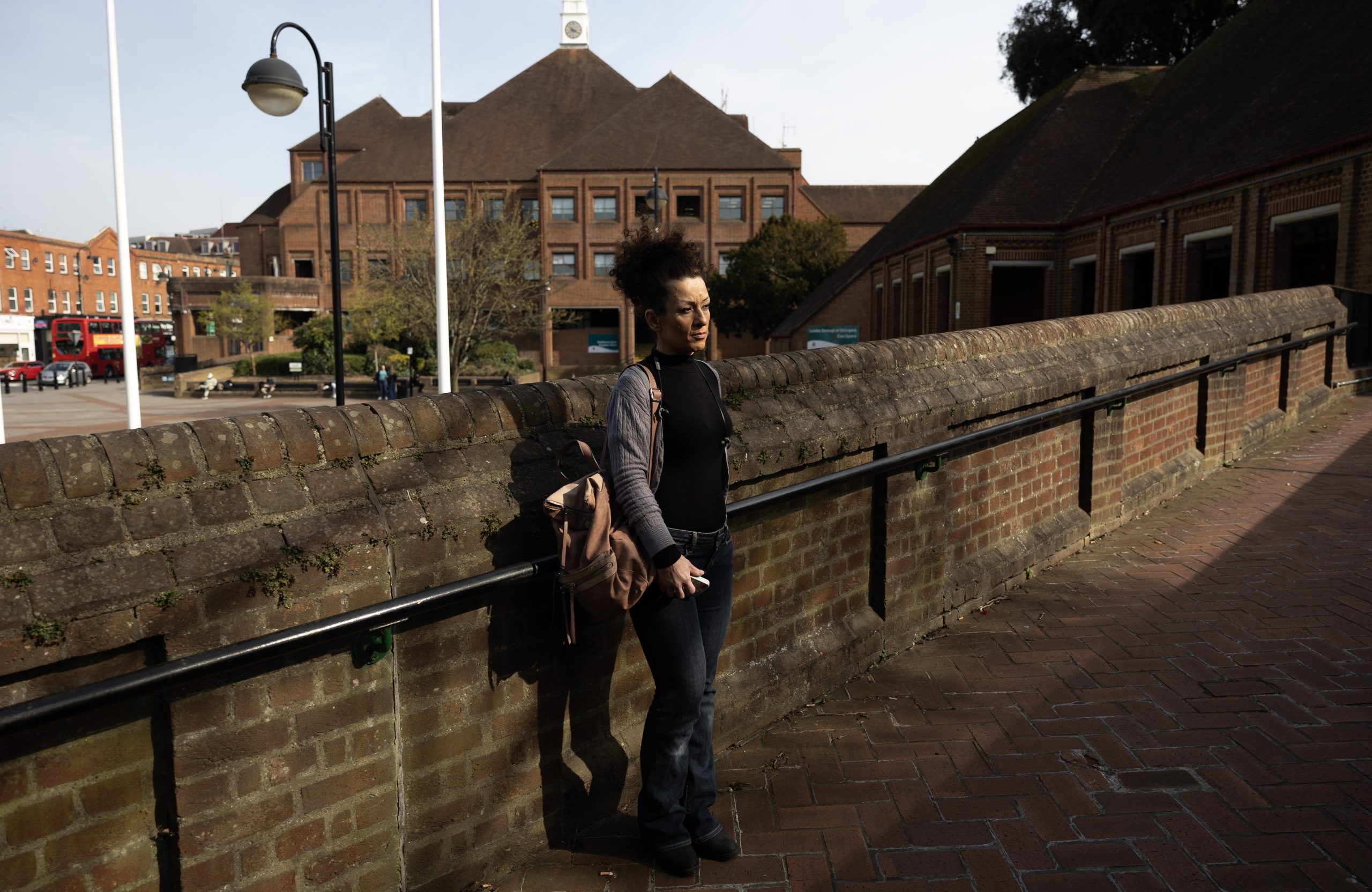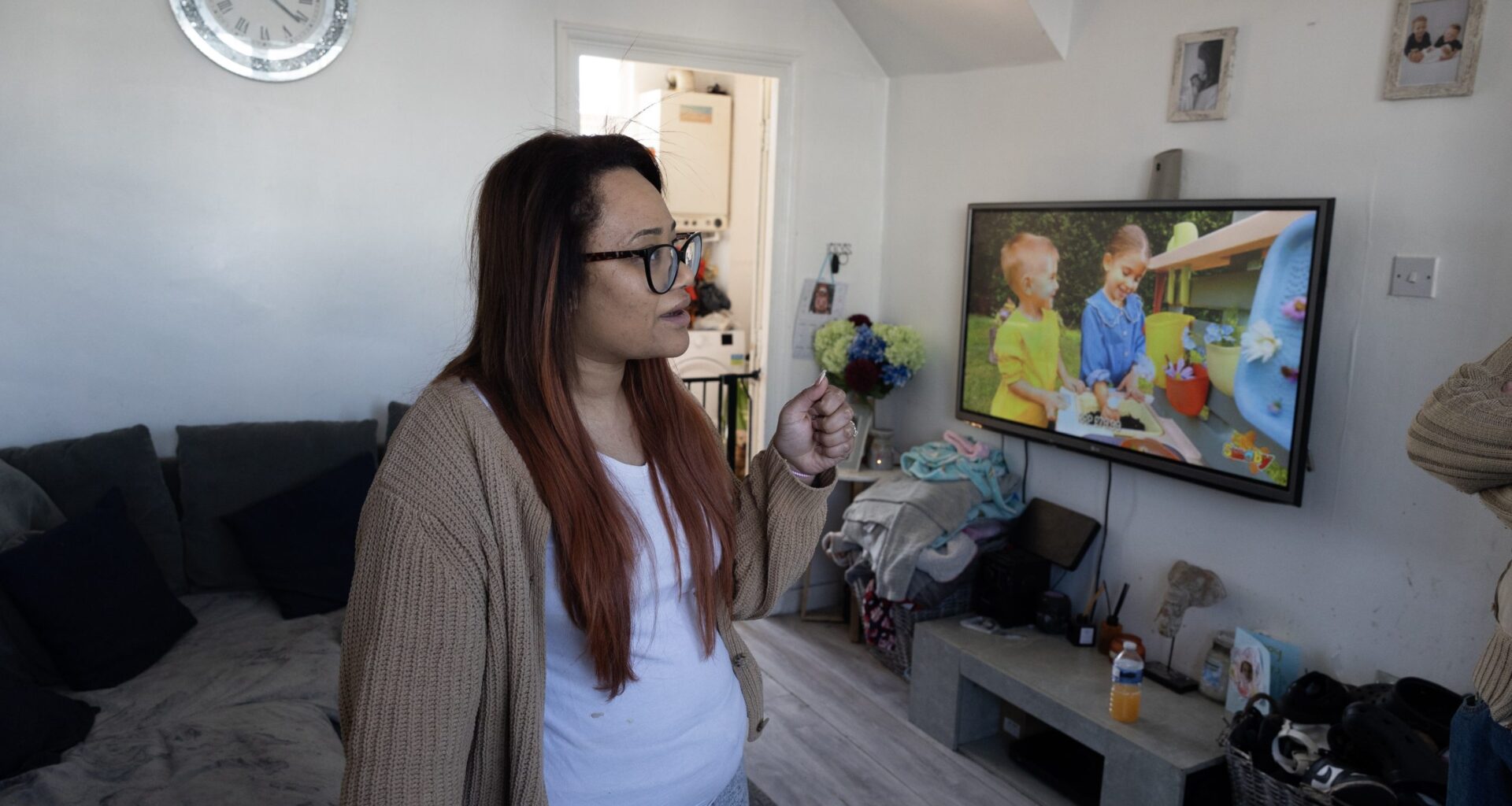When mum-of-three Shanice Aird witnessed a teenager being stabbed to death in Ealing, it was the first in a series of traumatic events. Having asked Ealing Council to move her because she was suffering post-traumatic stress disorder, she ended up in temporary housing in Feltham.
Although relatively nearby, it still moved her further away from her support network, which became crucial in helping her cope with the aftermath. She was also moved to the same area as her abusive ex, against whom she has a restraining order. But if she’d refused to move, she’d have been making herself ‘intentionally homeless’.
After living with faulty electrics that caught fire twice, mould problems and mice in the council-funded private rental, Shanice ended up back at the mercy of London’s housing system, when four years later the landlord evicted her to try and sell the property.
This time she did say no to the council’s suggested offer, of moving her to Harrow, fearing being isolated from her loved ones whom she relies on for support. And so she’s now homeless – and the council says she’s done it to herself.
The 30-year-old, who lives with bipolar disorder, told the Local Democracy Reporting Service (LDRS): “I was really upset, emotional, my stomach was in knots. It was the most awful feeling of failure, by not being able to provide shelter for my children, but angry that the council could do this… I’ve contacted my doctor 12 times in a month because of my anxiety and lack of sleep.
 Shanice Aird
Shanice Aird
Image: Facundo Arrizabalaga/MyLondon
“I feel like I am being punished for having a voice, for telling them [Ealing Council] what is best for my children, and moving me to a completely separate borough… taking us away from our home, what we know. It makes you feel horrible, unheard, and neglected – I’ve lost faith.”
Shanice is now forced to sofa surf between family and friends with her three children. But in some respects she is one of the ‘lucky’ ones with what she was offered.
Soheila Serkani became homeless after falling behind on her rent due to a pay dispute affecting her income.
When she approached Hillingdon Council for help earlier this year, she was told to accept a home in Hartlepool – 275 miles away. After refusing to move such a distance, the council discharged its duty to her, as it considered her intentionally homeless because of her ‘unreasonable refusal’. She and her daughter were left without a roof over their heads and forced to sofa surf.
Soheila told the LDRS at the time: “It’s a broken system… totally broken. Even before the eviction it felt impossible to get any help… I have no idea what kind of people are working there [at the council], it’s crazy.”
 Soheila Serkani, 45 (Image: Facundo Arrizabalaga/MyLondon)
Soheila Serkani, 45 (Image: Facundo Arrizabalaga/MyLondon)
For Soheila, moving to the North East would have meant quitting her job and uprooting her daughter, who is autistic and has ADHD.
When contacted by the LDRS, Hillingdon Council said that in-borough temporary accommodation is only available to certain eligible groups, and those who are not eligible may be offered a home in the private sector outside of London.
A common misconception is that housing offers from the council are somehow free. Those being told to move a long distance still have to pay rent, find schooling for children and rebuild their life from scratch. With ‘temporary’ housing placements often lasting years, they will then get a call one day, after rebuilding their life somewhere totally new, to say it’s time to come back to their home borough and rebuild their life once again.
In some cases, moving far away has benefited people. Dorcas Micaba, 26, was placed by Redbridge Council in temporary accommodation in Slough, before being moved 220 miles away to Hartlepool with an offer of a permanent home.
 Dorcas Micaba. (Image: Dorcas Micaba)
Dorcas Micaba. (Image: Dorcas Micaba)
With all of her family in her home country of Angola, Dorcas came to the UK alone in 2018 so she did not have the same support network locally that others do. She previously told MyLondon, after initially being reluctant to move, that she is happy in Hartlepool, particularly because the house is big enough from her family, and close to local services.
Beforehand, the family were sharing a bedroom between them while in temporary accommodation. Whilst this is undoubtedly an example of how a long distance move can be the best way to speed up securing a permanent home, many London families feel forced to say yes to unsuitable homes for fear of being on the street.
Adriana Kassakova, 53, and her two children were served a no-fault eviction from their home of 20 years after the landlord decided to refurbish and increase the rent.
Adriana contacted Ealing Council, looking for support. The council did offer the family a home in Hayes, however when Adriana arrived, she found blood-stained curtains, rat poo, and mould throughout the property.
The family claim they were “coerced” into signing the tenancy agreement, otherwise the council would consider them intentionally homeless. They were so disgusted by the state of the place they felt unable to live there, instead choosing to sofa surf with friends.
Since then, the family have been able to find a privately rented home after spending time homeless and relying on the kindness of friends to avoid sleeping rough.
At the time, Ealing Council said the family was in a low priority band for social housing, meaning the only realistic option was placing them in council-funded private accommodation. A spokesperson said the house met its minimum lettable standards.
Temporary accommodation costs London £5.5m a day
Under ever-increasing pressures to find temporary accommodation – London’s councils are collectively spending £5.5million a day on it – local authorities are, whether intentionally or not, delaying support for people at risk of homelessness. In some cases people are being incorrectly told they can’t be offered council help until the bailiffs turn up to evict them, when earlier support would head off that threat of homelessness.
Lewisham Council was forced to pay a mum almost £10,000 after the Local Government and Social Care Ombudsman (LGSCO) found it took 13 months too long to provide a family that was served with a Section 21 eviction notice with temporary accommodation.
Instead, the mother and her seriously ill child were forced to live in damp and mouldy housing, far from a hospital which they needed to visit regularly, because the council placed them in unsuitable accommodation out of the borough. Following the report, Lewisham Council agreed to end its flawed temporary accommodation policy, accepting that this situation could have been avoided.
In Wandsworth, the council was forced to review some of its housing applications after the LGSCO discovered that its housing allocations scheme might “wrongly exclude” families the council has deemed as intentionally homeless from its waiting list.
The report said every allocation scheme must give reasonable preference to applicants who are homeless, including those found to be intentionally homeless, along with people in a number of other categories. The Ombudsman found the council’s scheme said applicants will not qualify for social housing if it is ‘satisfied they became intentionally homeless… from their last home subject to an individual assessment’.
Subsequently, Wandsworth Council agreed to amend the wording of its scheme to make sure it does not exclude intentionally homeless households by default. It also agreed to review a small number of cases to see if people who were excluded should be given housing help.
For Shanice, the difficulties in finding a permanent home have long impacted her mental health, and her children. “It’s horrible as a mum, I feel like such a burden on my family and friends. At the age of 30, who wants to be going back to having to live with their mum and three kids?
“The council tells you ‘it’s okay, the children can adapt’ but they’re not okay, it has an impact on them, taking them out of schools. It’s not their fault, why should they have to uproot their lives?”
An Ealing Council Spokesperson has said: “We’re sorry to hear about the situation that Shanice and her family are in. Over the past few years, we have seen unprecedented demand for temporary accommodation. We are now temporarily housing around 3,000 families, at a huge cost. Increased demand and reduced supply have jointly made our borough one of the least affordable places for housing in London. In response, we’re actively expanding the number of affordable homes available, by directly building themselves ourselves, by securing them at other developments through our planning system, and by buying homes to let to council tenants.
“Shanice was made offers of suitable properties both in and out of the borough within easy reach of her support networks, which she refused. Because of her refusal of these property offers, and repeated warnings of the consequences, the council discharged its main housing duty, and referred her to children services at a neighbouring council, which may be able to support her under the Children’s Act.
“While we would like to be able to offer homes which meet all our homeless customers’ requests, the lack of options available to us often mean a compromise has to be made. We consistently and repeatedly offered Shanice homes that met her needs. There is no ‘blacklist’ in place for any housing applicants.”
📩

Get the latest breaking news, roadworks, crime updates and local events straight to your inbox – totally free, every day.
SIGN UP below
